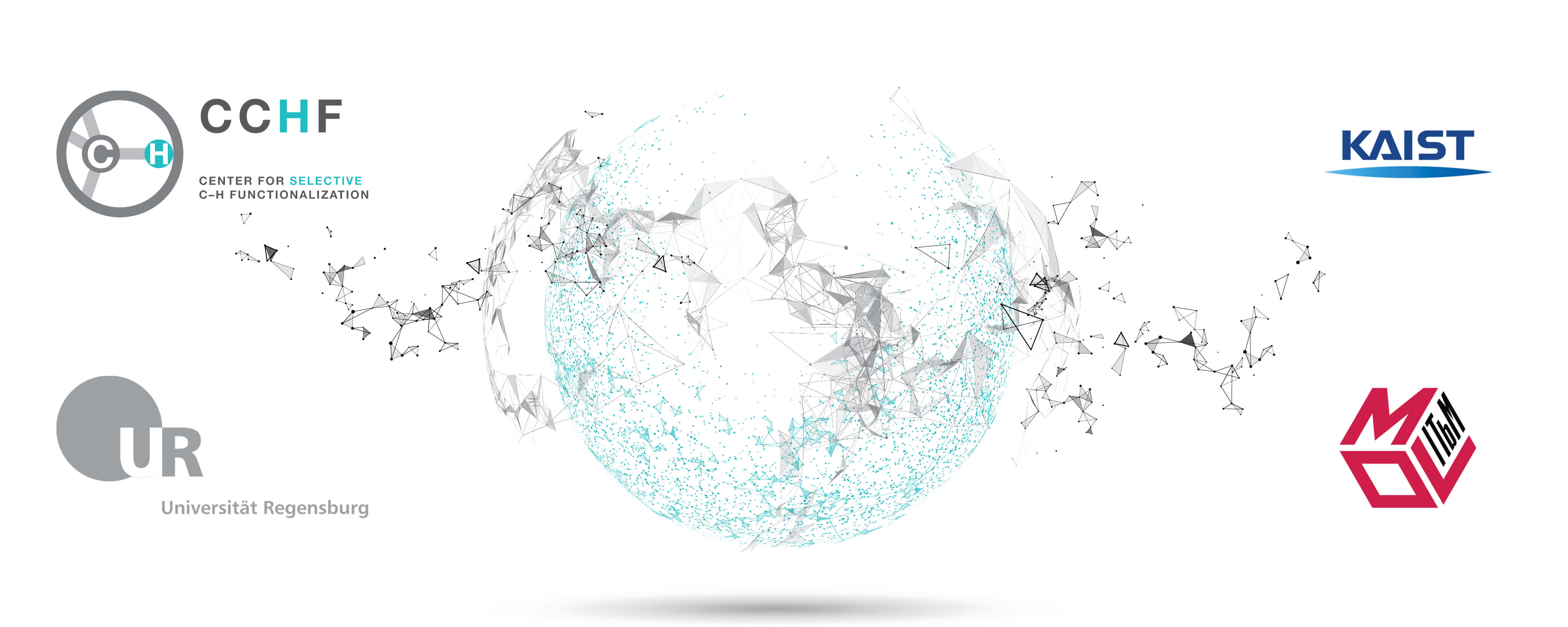CCHF IRES | The Global Institute for C–H Functionalization

International research exchanges provide an excellent opportunity to gain valuable scientific and cultural experiences. Joining a new lab enables students to both learn new scientific skills and techniques, and gain insights into how different cultures operate and think about their science.
Participating in a research experience and living in another country immerses the participants in another culture, broadening horizons and prompting students to think about new possibilities. This provides an enriching experience to ones academic studies.
Scientific Perspective of the GIC–HF
As a field of investigation synthetic organic chemistry has revolutionized modern society and manufacturing. The ability to engineer structures on a molecular level has imparted unprecedented levels of control over properties on the macro level. Fields as diverse as pharmaceuticals, fine chemicals, electronic materials and plastics, now routinely employ molecular modifications to attain required properties. There are few processes in modern manufacturing that cannot be traced back to this foundational technology. C–H Functionalization, the technology being developed by the CCHF, aims make a step change rather than an incremental refinement in this field by embracing many of the drivers that motivate modern science.
Researchers in the field of synthetic organic chemistry are driven by an overarching challenge; the conversion of abundant, and often relatively simple, chemical building blocks available from natural sources, into valuable, complex molecule structures for application in modern society. Progressively more sophisticated techniques have been developed that streamline synthetic sequences, expanding access to increasingly complex molecular structure, magnifying their utilization in commercially valuable applications.
These processes however have all been built around a common practice, using functional groups as reactive handles. Functional groups are considered the reactive components in molecules, whereas the relatively strong Carbon–Carbon and Carbon–Hydrogen bonds are considered to form the unreactive backbone of the organic molecule. Thus, the “art” of organic synthesis has focused on how to orchestrate the conversion and modification of a suite of functional groups in the most efficient sequence to generate the target molecule, while at the same time preventing detrimental reactions occurring at other functional groups present in the molecule.
In recent years a new approach for the construction of organic molecules has emerged that offers a wealth of benefits. Instead of conducting chemistry on the functional groups, sophisticated catalysts and reagents have been developed that permit reaction at the ‘unreactive’ C–H bonds in an increasingly selective and reliable fashion. C–H Functionalization unlocks new possibilities for how complex molecules are made and reveals access to new structural classes that would otherwise be very difficult to prepare. Access to such unexplored chemical space could provide avenues for novel biological and physical properties, uncovering new and valuable applications. The NSF Center for Selective C–H Functionalization is harnessing the potential of this transformative technology by bringing together a collaborative interdisciplinary team to advance innovative solutions to enable its general adoption by molecule makers.
By partnering with our international scientific partner’s the potential impact and reach of this transformative science is amplified. While each of the partners is using C–H functionalization as an enabling technology to better synthesize organic molecules, their goals are different. The complementary nature of these goals makes this collaboration and partnership an exceptional opportunity.